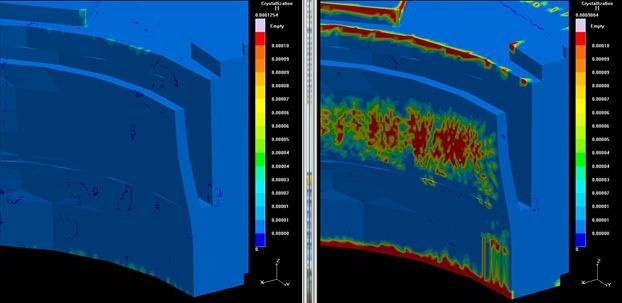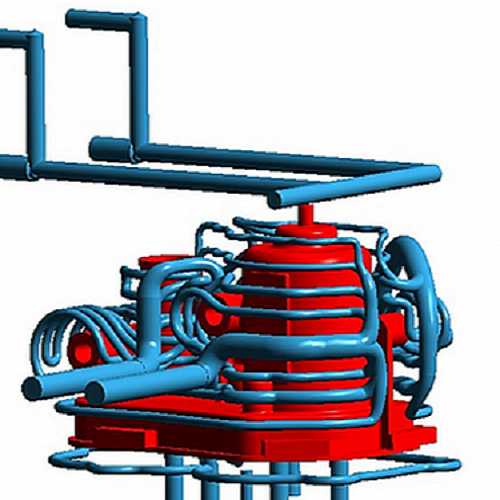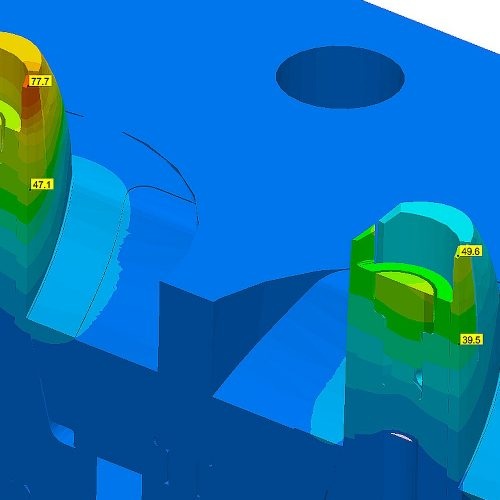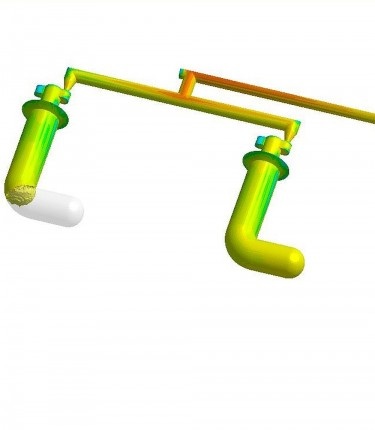SIGMASOFT® changed the way Tessy Plastics runs their Business
Adding value requires utilization of the best resources available; the best people, best practices, best suppliers and best working tools. The more complex the application, the more difficult it becomes to find an obvious solution. Sometimes, the devil is in the details.
Tessy understands this and has been using SIGMASOFT® Virtual Molding since April 2011. “The benefits have been overwhelming. We’ve been using simulation for 20 years and only in the last year since installing SIGMASOFT® Virtual Molding have we been able to realize significant changes to our business. SIGMASOFT® Virtual Molding is more than just an engineering tool; it’s proven to be a complete business tool for us. It helps us to quickly understand very complex problems and find solutions”, states Eric Frearson, VP of Engineering & China Operations. “We currently have five engineers trained in its use, so we have a good level of competence. It is very important to be able to share information and bounce ideas between each other. That requires in-depth knowledge of the problem, something we get with SIGMASOFT® Virtual Molding.”
Building and developing customer relationships has been one of the main achievements. Joe Raffa, VP and General Manager in charge of sales, recalls that the software gives the company the certainty to commit to jobs. “I know that when the customer proposes a new project to us, I can go to engineering and talk about simulations realistically and whether or not a project is even feasible. Once getting that confirmation after running the complete process virtually, I have the confidence to commit to a project, knowing that the information we received from the simulated model will reflect reality at least 98% of the time”.
Understanding the effect of processing on material behavior
A medical seal was cracking in the field. “Although the molding process was established using conventional scientific injection molding techniques, a multi-cycle analysis using SIGMASOFT® Virtual Molding with various filling times showed that the part required a faster injection speed in order to achieve adequate crystallization in the area of the cracking”. The difference in fill time was only 0.04 seconds, and it was impossible to pick it up using conventional machine-adjustment methodologies. In addition, the analysis showed the importance of venting location.
Another topic where Tessy has relied on SIGMASOFT® Virtual Molding has been the material selection. “We had an existing customer where the materials they were using were discontinued”, said Matt Learo, Sales Manager. “The customer called and asked that their new material and new tool be run through SIGMASOFT® Virtual Molding specifically, to see how the new material was going to behave”. Stafford Frearson, Project Engineer, expands: “The more complicated a project is and the more complex a configuration might be, when we are not sure how it might warp or how it might fill, there’s no question we feel more confident in going to the customer and saying `this is what you are going to see’, when we have the report backing us up”.
Conformal cooling: When is it worth it?
Tessy received a request from a customer to look at options for reducing cycle time. One of the options discussed was to add conformal cooling using DMLS (direct Metal Laser Sintering). Because this is an expensive process, first a thermal analysis was run to optimize the cooling design and to evaluate the conformal cooling against the original conventional cooling.
A multi-cycle analysis, based on current production parameters, was run to determine the number of cycles required to stabilize the mold. The analysis was run both on the original and the conformal cooling designs. The last cycle was extended on both options to determine the difference in solidification time for both cases.
An analysis of the original design showed that the water layout didn’t control the critical area with the largest impact on the cycle time, so the design needed to be improved. “Without SIGMASOFT® Virtual Molding and its multi-cycle capability this would have been a very costly and time consuming exercise and we may never have achieved the optimum design”, stated Frearson.
Reducing the cost of the mold through tempering design
SIGMASOFT® Virtual Molding was used to determine and understand the thermal transfer capabilities of a micro-mold tool running a high-temperature engineering grade material. “As space was limited in the micro-mold, we didn’t want to place large heaters that weren’t necessary for the performance of the mold or process”, Frearson said. Using SIGMASOFT® Virtual Molding at the initial stage of the process design, the correct placement for the heaters was found. It was also possible to evaluate the effect of the heat coming from the melt into the mold. “This allowed us to simplify the design reducing the cost to build the mold, as well as cycle time through correct heater placement”, according to Frearson.



